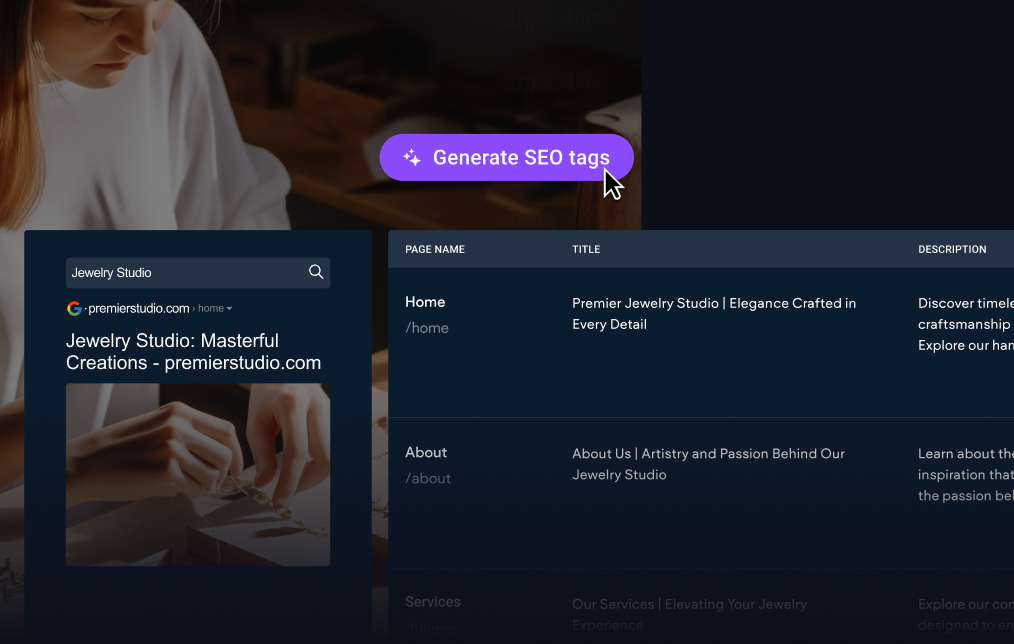Duda, the professional
website builder for digital agencies and SaaS companies, announced the launch of its AI Assistant’s latest feature: an industry-first AI-powered SEO automation tool.
The SEO tool is the only solution of its kind, allowing any company that builds websites at scale – particularly digital agencies and SaaS platforms – to seamlessly generate SEO metadata and optimize entire sites at once, all within the Duda platform.
Instant SEO metadata generation for all pages at once
Duda's AI Assistant streamlines SEO tasks, significantly reducing time previously spent on metadata creation. The AI Assistant analyzes a page’s content and uses integrated AI prompts to instantly produce meta titles and descriptions that adhere to SEO best practices.
Instead of manually creating these for each site page, users can now instantly generate meta titles and description tags for all site pages from a single dashboard. Users can generate new meta tags for the entire site at once, or view and generate only missing tags, across multiple site languages.
SEO implementation 5-10x faster
Using Duda’s AI Assistant is significantly faster and more effective than using 3rd party tools like ChatGPT, which require manual prompting and copy-pasting content from one platform to another.
“AI is transforming how website builders approach SEO,” said Duda CEO and Co-founder, Itai Sadan, “Our AI Assistant simplifies SEO implementation, making the process 5-10x faster and empowering users to focus on core business operations, prioritize growth, and boost client satisfaction and retention.”
Delivering more value for clients
"This is a game-changer for our agency,” said Nat Rosasco, Principal and Creative Director at
Olive Street Design, a full-service marketing agency from Chicago, “Duda's AI Assistant should save us 3 to 6 hours on most websites and, beyond that, our clients will get a better-optimized website out-of-the-box, increasing their lead generation."
Duda’s AI Assistant already features an AI content creation tool that allows users to instantly generate relevant content based on the business context, improve existing web copy, and adjust text to fit the design or match the right tone of voice–all without leaving the Duda platform.
"AI tools will not replace agencies"
Itai Sadan added, "AI is undeniably reshaping the digital marketing landscape at an unprecedented pace. But it’s important to remember that it’s a tool and cannot replace a comprehensive marketing strategy."
"We developed the AI Assistant to help agencies and other large-scale web building operations get the most out of generative AI to build amazing websites fast – and pair this with insight and creativity to deliver unmatched value to their clients.”
Learn more about Duda’s
AI Assistant.






